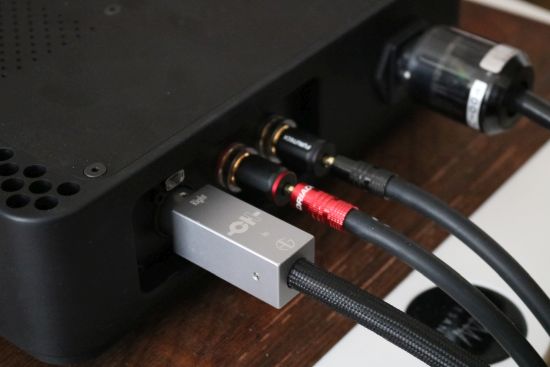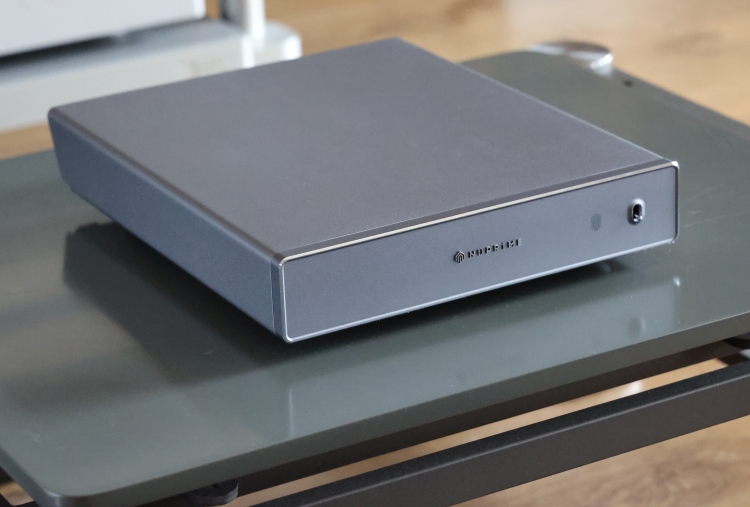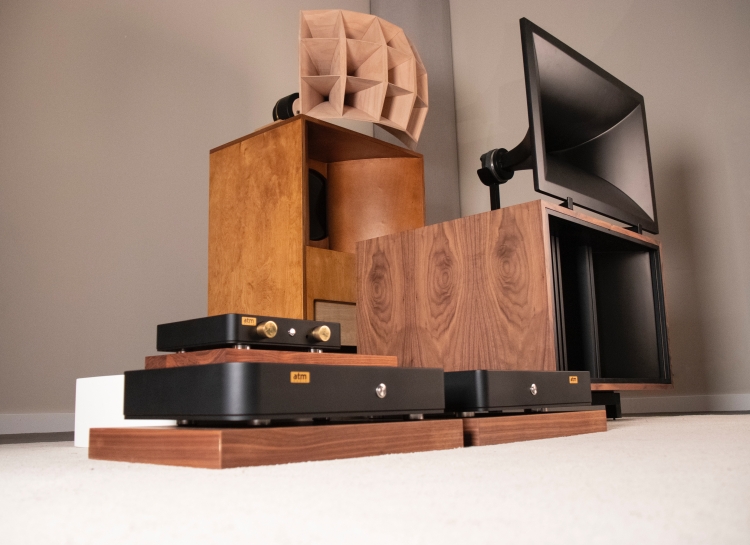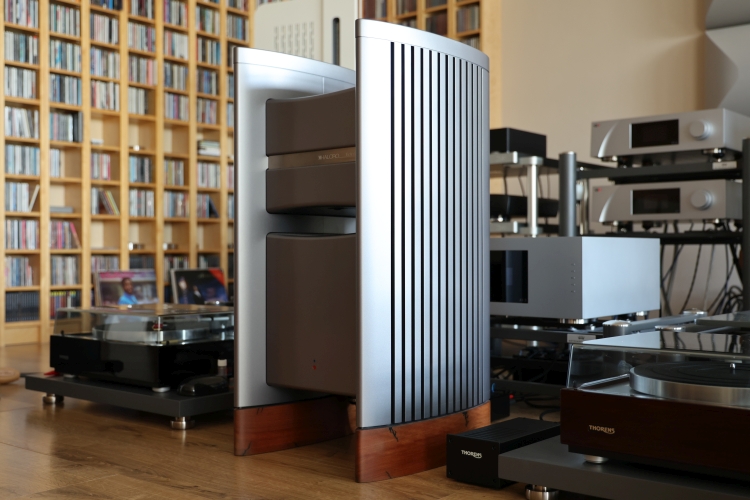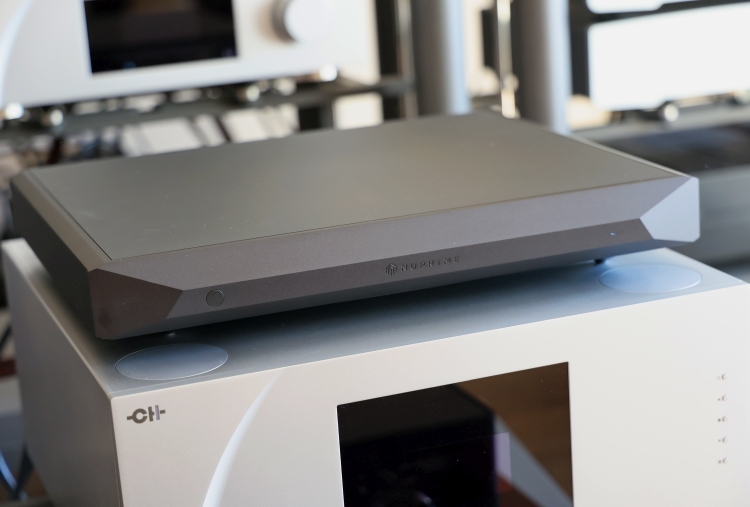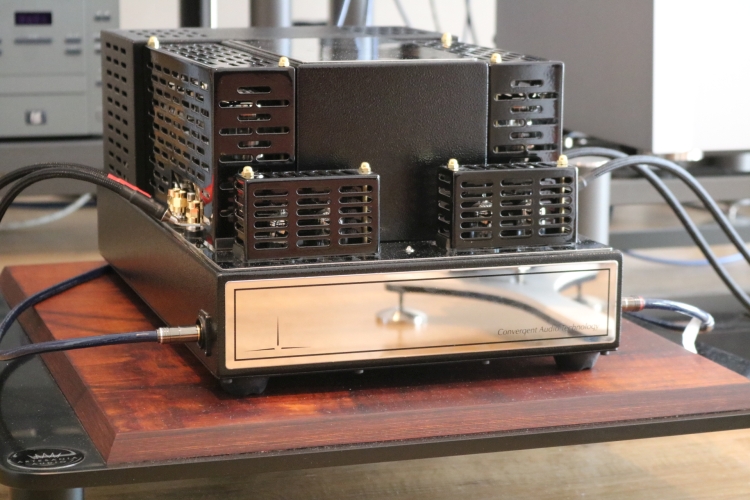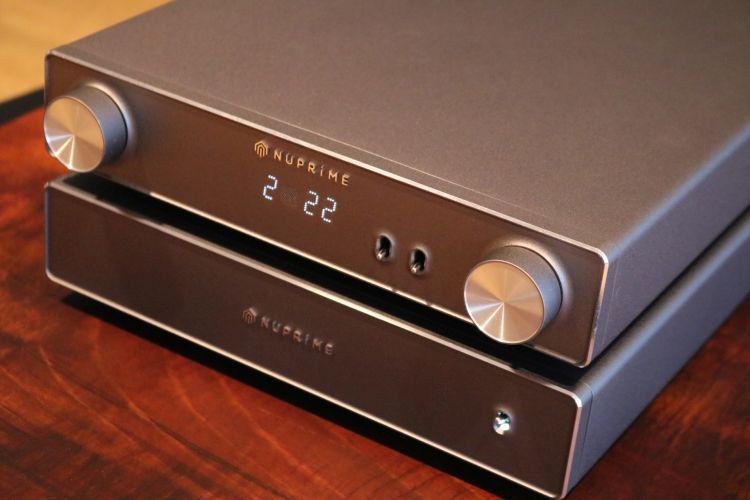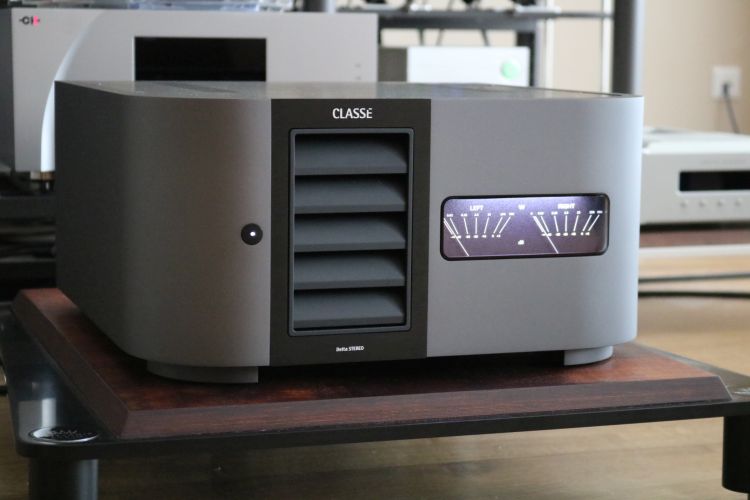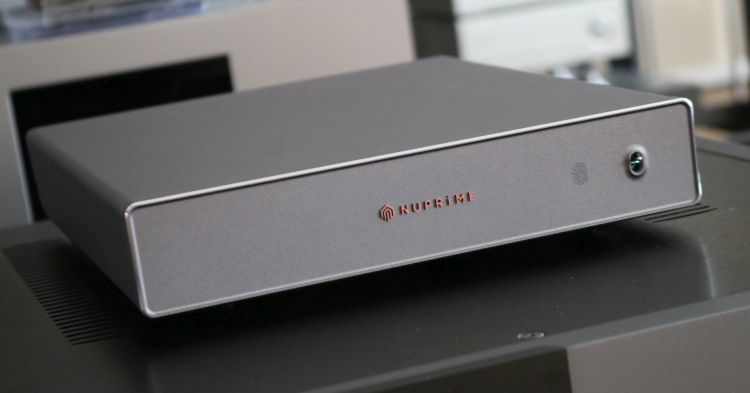atm-audio EPM-700 class-D power amplifier with Korg Nutube triode input buffer
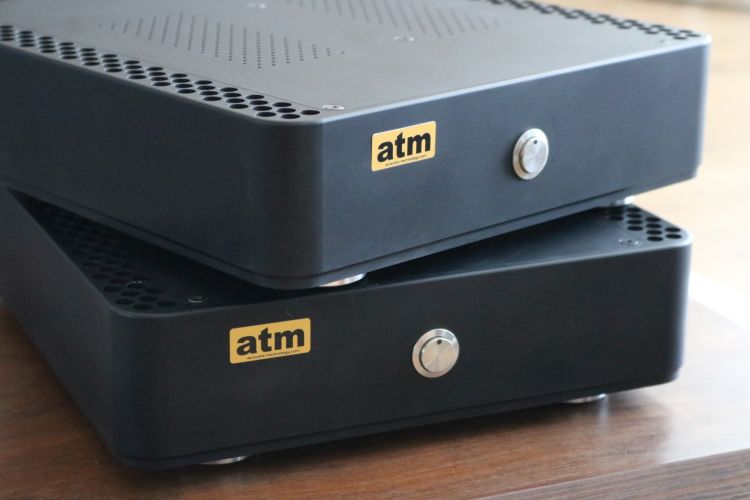
Review samples supplied by atm-audio
Retail prices in Europe ex-VAT:
With Sonic Imagery SIL994 input buffer: 2.919 Euro pp (5.838 per pair)
With Sonic Imagery SIL990 input buffer: 2.969 Euro pp (5.938 per pair)
With Korg Nutube triode input buffer: 3.100 Euro pp (6.200 per pair) (as reviewed)
Available in Black, Silver, Red and Gold at no extra cost
Available in Chrome for an additional 150 Euro
Starting with the ICE-power Jeff Rowland model 201’s via other brands that used either ICE or Pascal modules, interlaced with various other designs that I heard over time, I have plenty of experience with Class-D amplification. While I always admired them, I never loved them. The arguments for this are by now so worn out that I will not repeat them here. The Audio Physic Strada Monos and the Naiu Labs Ella that both use unique and proprietary amplification techniques are worth mentioning as positively deviating alternatives but, still, I was not prepared to trade in my Class-A/B amplifier for any Class-D variant. My opinion changed when I heard the Mola-Mola Kalugas (Ncore) and the NuPrime ST10 (Proprietary circuitry). The because of the superb resolution and refinement along with treble air and refinement that I had until that time only heard from Jeff Rowland Class A/B designs. The latter because of its incredible bass solidity and “alive” sound combined with remarkably acoustically convincing, non-synthetic timbre. If only these two amplifiers combined their strengths!
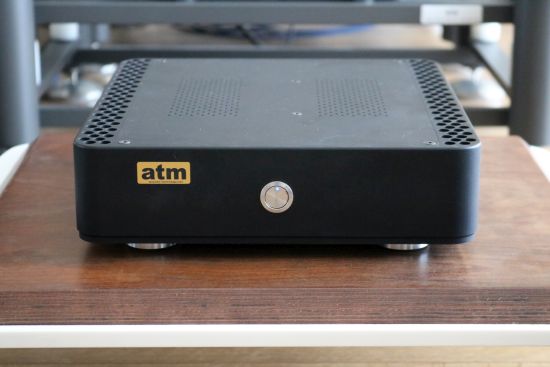
Mola-Mola is a high-end branch of the same company that makes Hypex and Ncore. Based in my birth town Groningen, Hypex has been producing Class-D modules since 2003. The NC500 module which is at the basis of the EPM-700’s is closely related to the internals of the Kalugas. No wonder, then, that the atm-audio EPM-700’s show some similarities with the Kalugas. But the interesting thing is that they also have similarities with the NuPrime ST10.
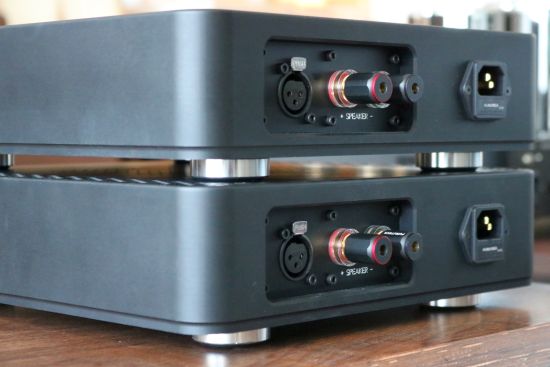
atm-audio EPM-700
The EPM-700’s are encased in a beautifully-shaped anti-vibration aluminum chassis made from a solid block of aluminum with individually-milled compartments for the power supply and the amplification section.
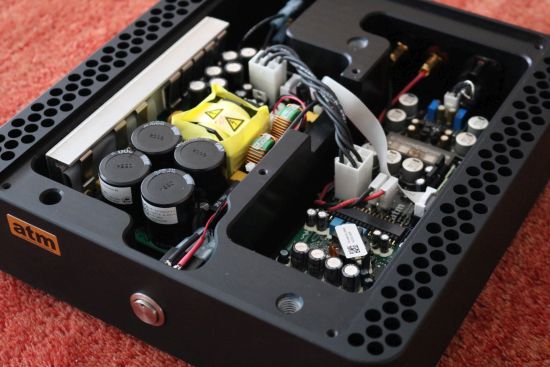
The case is available in Black, Silver, Red, Blue and Gold at no extra cost and in Chrome at a 150-euro surcharge. All connectors are Furutech. The basis of the EPM-700 Mono consists of a Class-D Hypex NC500 module with NCORE technology powered by a 1200W switched-mode power supply and a customized input stage. By default, the amplifier has a Sonic Imagery Labs 994 input buffer with Enh-Ticha low noise operational amplifiers and very low noise Sparkoslabs voltage regulators.
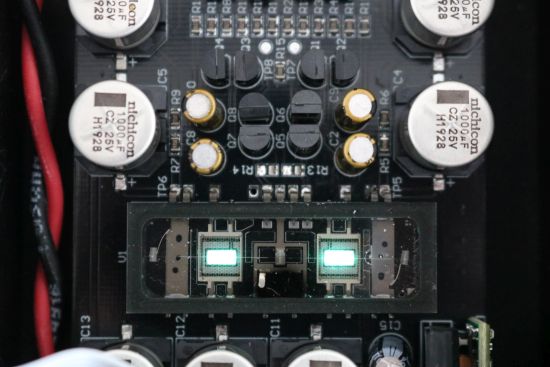
Korg NuTube Triode valve on custom atm-audio input board
Optionally, the amplifier is available with the Korg NuTube triode valve or the Sonic Imagery Labs SIL990 Enh-Ticha Operational Amplifier. In both cases, this concerns only the input voltage stages, the output stage is the same for all versions. The version reviewed here contains the Korg Nutube triode input.
Incidentally, the buffer is also compatible with the Purifi Audio 1ET400 module which, according to the manufacturer, would obtain the same results.
With a specified load tolerance of 1-8 Ohms and hundreds of Watts (up to 500W at 4 ohms), the amps should be able to drive the vast majority of speakers in existence. Still, it is worth noting that I found that the way the amplifiers are voiced does favor the partnering with sensitive and lively sounding speakers. With the EPM-50 Class-A mono’s this was no different, but then, I could point at the low damping factor and presumably low feedback. With the Class-D modules these should not factor in and thus it must come down to the voicing of the amplifiers.
So, what is this voicing I speak of? It’s the way that music is produced in a totally unforced and effortless manner, flowing freely and without a hint of hardness or dryness. One might expect such qualities in a Class-A or A/B design but not in a Class-D design. I suspect that the Korg Nutube triode tube input section plays a large role in this and, of course, this is where the special atm-audio expertise comes in.
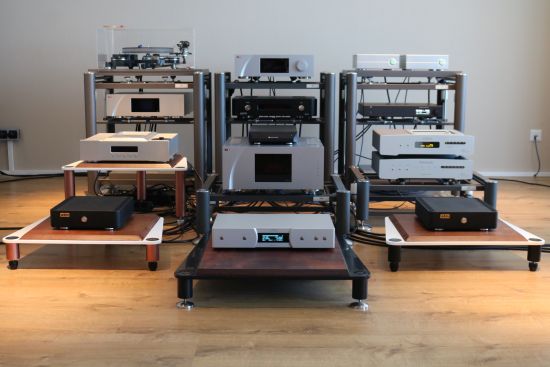
While the Class-D NuPrime ST-10 (on top of the CH A1.5) has no problems driving either the Magico’s or the Logans and sounds mighty powerful and lively while doing so, both speakers do make it very obvious that this amp lacks resolution, refinement, liquidity and air – all areas in which it is royally outclassed by the atm-Audio EPM-50’s. Would the Class-D amplifiers offer the best of both worlds with these speakers?
Listening – Magicos
The EPM-700’s only offer an XLR input but since that is a format that I generally prefer I have plenty of cables to choose from. If you want to use cinch cables then you will have to use an adapter. This reduces the gain by 6dB but otherwise works just fine.
My first impression of the EPM-700 amplifiers, connected using Driade Flow 405 speaker cable with the Magico S1 MkII loudspeakers in the main system with the Aqua La Diva CD transport into the APL DSD-AR DAC with its built-in volume control after having used the NuPrime ST-10 amplifier, is that they are most certainly not your typical Class-D amplifiers. For starters, they do not have the vice-like grip and overly clean sound of regular switched amps. Actually, they sound similarly relaxed and sweet as I remember the EPM-50’s with these speakers, with a similarly low-feedback-like, smooth and utterly relaxed delivery. Further, the EPM-700’s are a lot more sophisticated, airier and more refined than the ST10.
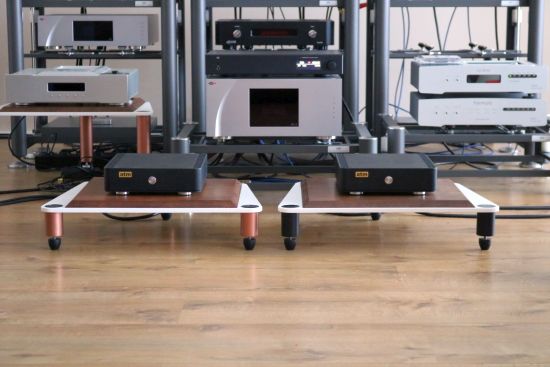
Meanwhile, the EPM-700’s low-level resolution and fluidity are several notches above the ST10’s and this is where they are more similar to the Mola Mola Kalugas. The EPM-700’s timbre is remarkably natural and highly convincing and this is one of the things they have in common with the ST-10. There really is no trace of the lingering synthetic nature that I still heard with the Mola Molas.
The EPM-700’s also have a more voluptuous soundstage with an involving wrap-around effect. The Spanish dua sounds so good, in fact, that I feel that they operate at the level of an outstanding Class A/B amplifier while their relaxed bass and midrange sweetness makes one almost suspect listening to a Class-A amplifier.
So far, the atm-audio amplifiers are pretty amazing! However, as a price to pay for their utter lack of edge, they do not sound quite as expressive and impactful or dynamic as for example the NuPrime ST-10. That amp performs less well in a whole range of parameters but it does sound more exciting. Also, while the EPM-700’s don’t sound slow, the other transistor amplifiers that I have available do sound nimbler and more immediate. Now, I should note that all this is noted in combination with the Magicos.
The Magico Q-range is notorious for being unforgiving as well as difficult to drive but the S1 mkII’s that I use are much easier to drive (although they, too, are current-hungry) and have a much more forgiving sound. They have spectacular resolution but are also gentle and refined and thus they work best with amplifiers that are very neutral and lively. Surprisingly, they even work pretty well with amplifiers that sound a little rough, as is the case with the NuPrime. In my experience, sweet-sounding amplifiers are not ideal for these speakers.
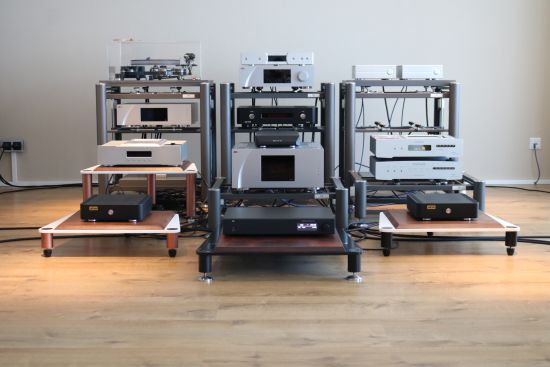
After having substituted the APL DAC for the even more astute-sounding Weiss DAC502, the pacing does pick up and so does the dynamic differentiation but the transients remain a little soft and the feeling of a sweetened and overly relaxed sound remains. The Weiss is one of the most direct sounding DACs that I know but in this combination, it’s hardly recognizable as such. The delivery sure is highly sophisticated and certainly not possessing of the usual Class-D downsides but it’s leaning over to the other side where it becomes so smooth that much of the excitement is ironed out in the process.
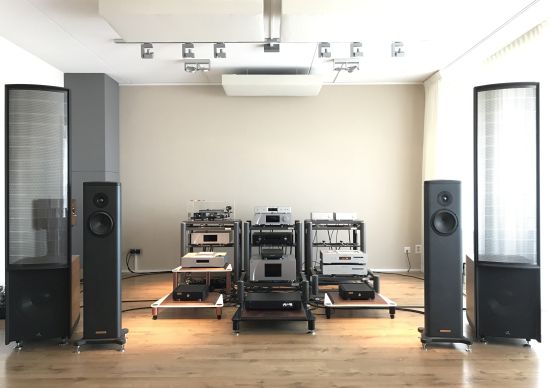
Evidently, the Magicos are not ideal partners for the Spanish Duo. So, let’s do a swapperoo.
Listening – Xavians
In an effort to try something completely different while remaining in this listening space, I grabbed the Xavian Perla Esclusivas and hooked them up in the main room. Dropped in-between the Magicos and retaining the rest of the system including the Weiss DAC, the EPM-700’s turned in a completely different performance!
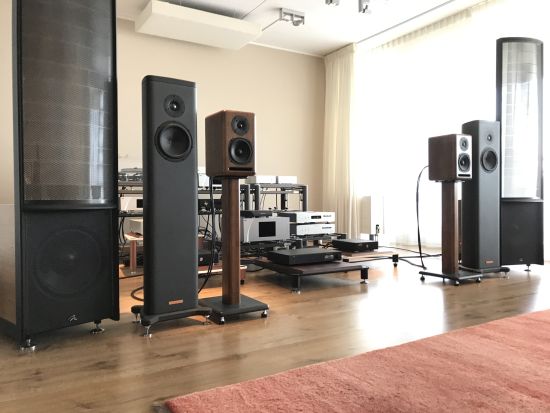
The Weiss’s neutrality and excellent impulse behavior teamed up perfectly with the Xavians’ bold and infectiously dynamic behavior to turn in an immediately captivating and immensely entertaining performance. Propulsive and impactful, enormously dynamic and highly lyrical, the system was now truly rocking!
Interestingly, in spite of their clearly non-ideal placement, the soundstage still filled the entire room with sounds coming from seemingly everywhere except straight from the speakers. Actually, a friend who was listening in had to do a double-check to confirm that it was really the Xavians producing this room-filling sound.
The toe-tapping factor was off the charts and, in spite of the speakers’ higher coloration, the tonality came across as highly lifelike in all the right places, especially with vocals, piano and guitars. Put short, there was some mighty fine music-making going on here.
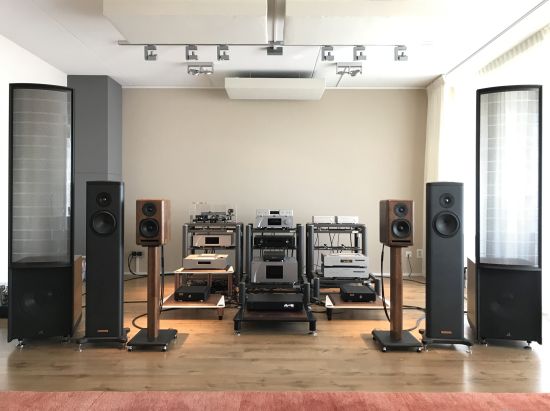
This was a truly rare case of amazing lushness combined with boundless dynamics and great PRaT. The amps’ rich tonality and gentle smoothness are still present undiminished but now perfectly balanced with solid and impactful bass and an overall highly energetic and expressive delivery. How is it possible that these amplifiers can sound so different depending on the speakers? Well, as I mentioned, the Magicos are highly refined and already gentle themselves and they don’t need any sweetening. The Xavians are just very different beasts. They are much less linear and refined and they are certainly not as neutral or as transparent, and yet, they turn in an absolutely lifelike performance.
With the Xavians, the EPM-700’s bass is also truly superb. It’s well-proportioned, solid and full-bodied, yet articulate and precise, just like it is in real life. In spite of lower apparent resolution, instrumental textures are now also laid out beautifully and temporally, the performance is absolutely perfect and dynamically everything is just right.
